VOL. V. LLANO, CALIFORNIA, OCTOBER, 1917. No. 6
The Western Comrade
The Devil's Punch Bowl

SOUTH of Llano, lucked away in the surrounding hills, and scarce visible from the road unless special attention is directed toward it, lies a huge mass of conglomerate rock, worn and eroded, seared by time and storm, perforated by innumerable little caves, carved into deep canyons and ravines. Uplifted masses rear themselves above the general level. A precarious trail winds along cliffs that look down hundreds of feet into the chasms below. It is a weird and picturesque spot, little visited, rich in scenic wonders, a small reproduction of some of the wonders seen in the Grand Canyon of the Colorado.
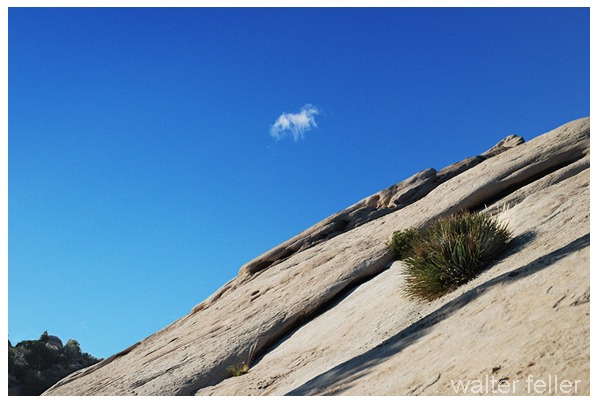
The Devil's Punch Bowl it is called. It is perhaps a mile in width and two miles or more in length, paralleling the ranges of the Sierra Madres. Almost devoid of vegetation, yet circled by more or less verdant hills the spot is one to long be remembered.

Visitors are not taken to the Devil's Punch Bowl when they visit Llano. Some go to the timber where the logging camp is, where pretty, though diminutive, Jackson's Lake is a cool and inviting spot; some go to the Fish Hatchery where the cienegas, flowing from the dry bed of a seasonal creek, unite to form the Big Rock, and these visitors marvel at the springs thus bursting forth.

But the Devil's Punch Bowl is not Llano property and it is not easily accessible. There is a way to reach it by automobile. That is by way of the Pallet Valley, a valley high above the Antelope Valley, snuggled up close to the highest southern mountain range visible from Llano, in the protected coves and arroyes of which are small farms. But the road from Llano to the Pallet Valley is neither direct nor good, and those who make the trip once do not care to make it again unless it is necessary.

There is another way and a direct one. That is to go through the beautiful Valyermo ranch, perhaps five miles south of Llano. The road to this place is excellent. But the rest of the trip to the Bowl must be made afoot. However, the trail is good, and it is easily followed.

Standing sentinel guard over the North Portal of the Bowl is a giant mass of red rock. A narrow defile through the hills which mask the Punch Bowl widens rapidly and the vast upheavals of grayish rock are piled higher and higher. Trickling out through the south gap is a little stream. It does not get far, soon being absorbed by the thirsty sand, licked up by the ardent sun, and drunk by the roots of the alders that line the little stream. A splendid camp ground, long known and reached by a short trail branching off from the main one, with plenty of wood, with clear, cold, pure water in abundance makes this a delightful place to remain. The source of the little rivulet is about 200 yards above this spot, where it emerges from beneath the foot of a cliff. Early in the morning there is a generous flow; by night it has dwindled to a mere trickle, but it is unfailing throughout the year. Why it should be so low in the evening is not fully explained by absorption, by the amount taken in by tree roots, and that which is evaporated. The interesting explanation has been advanced that the mass of rock in the cliff becomes heated during the day, expands, and in this expansion closes the crevice until only a small dribble comes out of the earthquake fault, just as one might shut off a faucet.
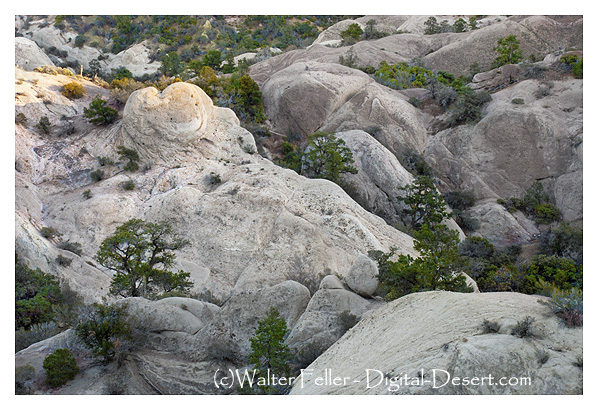
Leaving camp, and again taking to the trail, one is soon high up toward the crest of the formations, for the trail disdains the valley and holds to the ridge. It is an old and wellworn one, probably used when these mountains were prospected over.
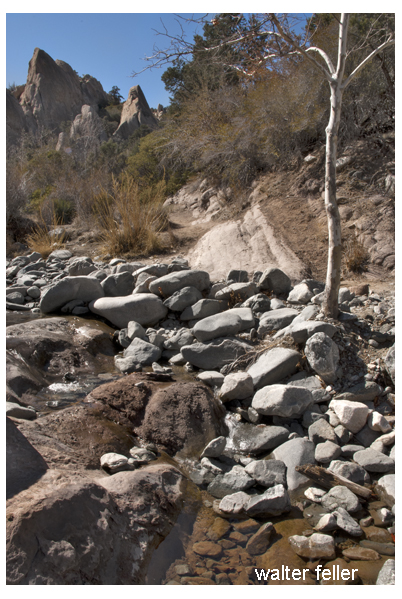 On every side are deep clefts, while rising higher than
the trail and off to the west are still higher peaks. Many are
quite rugged, and some are almost sponge-like in appearance,
being honey-combed with deep, narrow caves which reach
into the dark interior of the peaks.
On every side are deep clefts, while rising higher than
the trail and off to the west are still higher peaks. Many are
quite rugged, and some are almost sponge-like in appearance,
being honey-combed with deep, narrow caves which reach
into the dark interior of the peaks.Some of these caves are quite large, and one which is easily accessible, though not visible from the trail and perhaps 500 yards west of it, is large enough to shelter a dozen men. Bees are occupants of many small fissures and holes in the cliffs. High up on some of the crests can be seen dark openings about which buzzards wheel and sail, and in which are probably their nests.
With exception of the trees along the rivulet before mentioned, and a clump of pine trees near the trail in another place where a depression has permitted soil to collect enough to nourish some hardy pines, there is little vegetation with exception of some manzanita and greasewood that clings to the steep, rocky walls, their roots prenetrating the crevices of the rocks and finding in some mysterious manner, food and water on which to survive.

This whole, upheaved rocky mass lies in strata, the lines of which are visible at considerable distances. Great uptilted ledges, pointing at angles of 45 degrees toward the north, each perfectly parallel with its neighbors, lean like multiplied towers of Pisa, vast and mysterious and enticing.

In this land of the Devil's Punch Bowl, barren of vegetation, nearly, there's a charm and a beauty that is difficult to describe. Deep clefts have been worn by tiny streams of water which have persistently cut away at the soft rock till they have worn their way through. Through these gateways, V-shaped, inverted pyramids of space cut deep into the rock, are glimpsed enchanting views of the far-off, low-lying hills, and the still further, vast stretches of the Antelope Valley, rimmed in the blue distance by the pale Tehachapi mountains, misty and uncertain on the northern horizon.
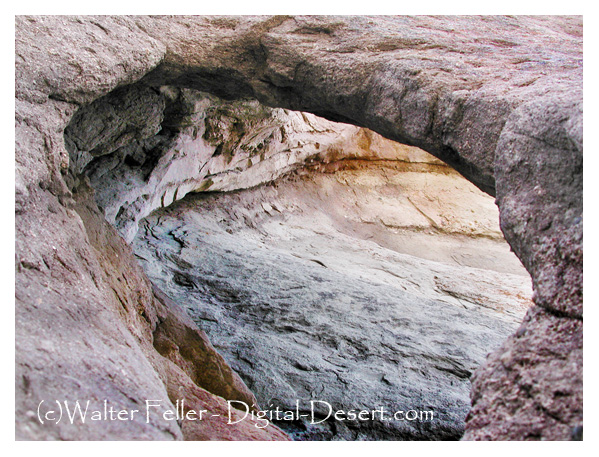
There's nothing of value, but there's much of beauty in the Devil's Punch Bowl, and those who leave Southern California to visit better advertised regions could spend wonderful days here and never be more than 100 miles from Los Angeles, within 50 miles in a direct line.
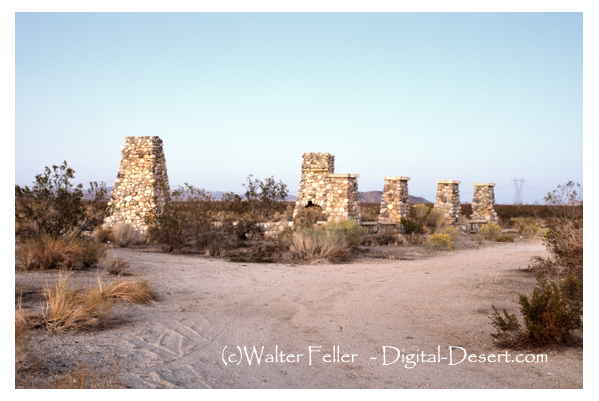
It is one of the wonderful things of this wonderful spot on the edge of the Antelope Valley, part of the Mojave Desert.
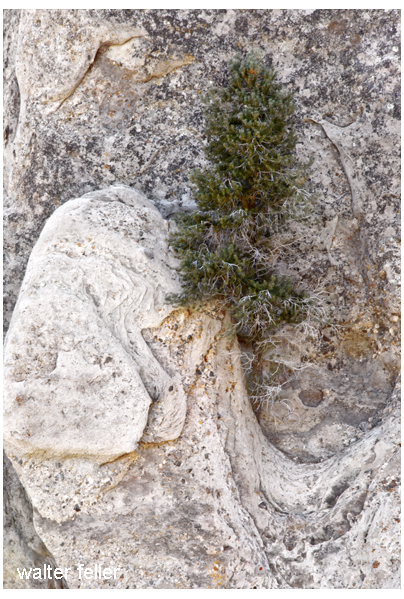 It is one of the surprises; and comparativelv few even of those
living in the Colony, have ever visited the Devil's Punch Bowl
and viewed its rugged crags, its deep chasms, its caves, its
peaks, its perpendicular cliffs of conglomerate. Some day its
charm will be appreciated and commercialized, and together
with other points of interest here, neglected and appraised
at but a fraction of their value will be the haunt of tourists
and visitors, in summer because of the delightfulness of the
mountains at that season and because it is vacation time; in
winter because residents of Southern California can vary the
monotony of the winter days by quick, easy trips to scenes
of snow. And those from the East, pining for a glimpse of
snow and the bite of frost again, can enjoy it till the novelty
wears off, returning home again, all within a day, for the
Devil's Punch Bowl is 4000 feet above sea level and there's
plenty of snow there in the winter time. It is probably more
beautiful then, even, than it is in the summer. But seen
summer or winter, only those lacking in a perception of the
beauties of Nature or those surfeited with scenes of grandeur
can fail to be impressed with the beauties of the rugged,
rocky pocket hidden among the narrow range of hills that
divides the
Antelope Valley
from the smaller Pallet Valley.
It can never become a popular place, but it merits a journey
of many miles, and well repays the effort.
It is one of the surprises; and comparativelv few even of those
living in the Colony, have ever visited the Devil's Punch Bowl
and viewed its rugged crags, its deep chasms, its caves, its
peaks, its perpendicular cliffs of conglomerate. Some day its
charm will be appreciated and commercialized, and together
with other points of interest here, neglected and appraised
at but a fraction of their value will be the haunt of tourists
and visitors, in summer because of the delightfulness of the
mountains at that season and because it is vacation time; in
winter because residents of Southern California can vary the
monotony of the winter days by quick, easy trips to scenes
of snow. And those from the East, pining for a glimpse of
snow and the bite of frost again, can enjoy it till the novelty
wears off, returning home again, all within a day, for the
Devil's Punch Bowl is 4000 feet above sea level and there's
plenty of snow there in the winter time. It is probably more
beautiful then, even, than it is in the summer. But seen
summer or winter, only those lacking in a perception of the
beauties of Nature or those surfeited with scenes of grandeur
can fail to be impressed with the beauties of the rugged,
rocky pocket hidden among the narrow range of hills that
divides the
Antelope Valley
from the smaller Pallet Valley.
It can never become a popular place, but it merits a journey
of many miles, and well repays the effort.
